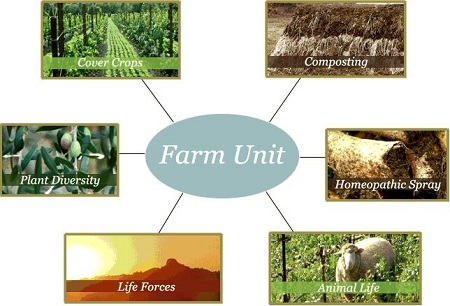|
Biodynamics is a form of alternative agriculture that applies various principles of organic farming, while factoring in the optimal lunar and solar phases. It's a complicated field, but there's strong research showing positive effects on plant and tree sustainability, which lessens the need for tree removal. The best kept secret in biodynamics today is valerian preparation.
Rudolf Steiner, a well-known author, created a powerful agriculture course where he cited two problems trees and plants face that we have the ability to combat:
The Nelson farm in North Carolina was able to pick berries well into December by spraying valerian after every frost that autumn. As such, no tree removal was necessary. Heikke Marie Eubanks in Oregon was able to keep all of her gardens alive, following a series of four killing frosts in the spring. She added valerian to the finished compost (in the way Steiner indicated) and all of the plants fertilized with it remained untouched. So we have winter kill survival on the Nelson farm and frost exposure in the Eubanks garden. Valerian, when properly applied, cures both. What about lack of water? That would be drought. The best example of drought farming in the world is undoubtedly the Podolinsky farm in Australia with its 10 to 15 inches of rainfall per year. Alex Podolinsky, a pioneering biodynamic farmer, famously created 3 feet of topsoil using his own prepared 500 formula. This formula as it happens applies valerian to a finished horn manure product. Just like the Eubanks finished compost that Podolinsky prepared, 500 is a colloidal carbon substance that can absorb, hold, and radiate a life force. Valerian protects both the life of the soil and the life of the plant from drought when used in the correct manner. What is the connection between winter kill frost and drought? Lack of water. Cold air is dry air. Frost (as freezerburn) will burn a plant just as drought (as fire) will wither it. The lack of water is the common element. The presence of valerian protects the integrity of the cell membrane under drought conditions, as distinct from temperature. Why then do so few farms report these remarkable effects of valerian use? Because valerian must be applied to a finished colloidal compost product or to a colloidal soil to take effect. As a liquid dilution, it must be absorbed by something in order to transfer its force. Valerian applied to the freshly made compost pile simply disappears as the substance of the pile heats up and undergoes transformation. Steiner is quite clear about this in his instructions for valerian use, stating, "Before using this so treated fertilizer, we are to greatly dilute in warm water the juice of the blossoms." And how many of us are using warm water to make valerian? Notice that you can't use compost as a fertilizer until it has become a finished product. Valerian produces astonishing results only if it is applied and used in the right way, as indicated. How did we go astray in using valerian? Nearly a century of following instructions for making and using it without some insight into how it actually works makes it hard to correct errors, evaluate results, or spark enthusiasm to explore its possibilities. Think what this could mean to California agriculture in the next drought, or upstate New York fruit tree farms during the bud killing waves of spring frost, or the Florida orange grove harvest in the fall. Valerian is the answer.
0 Comments
Your comment will be posted after it is approved.
Leave a Reply. |
AuthorJoe Stevens writes for numerous publications on the latest in organic and bio-dynamic agriculture research. |

 RSS Feed
RSS Feed